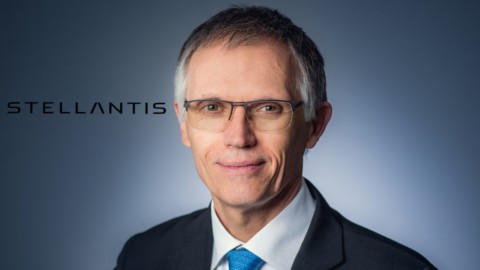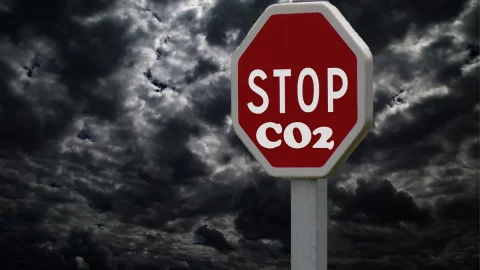Three hundred billion turnover by 2030. A fleet of 75 new electric models in profit by that date without however affecting the operating income margins which will remain in double digits throughout the duration of Dare Forward 2030, the strategic plan of Stellantis presented by CEO Carlos Tavares in Amsterdam.
Stellantis plan: only electric cars by 2030 in Europe
Ambitious goals but that don't give the measure of the challenge of the number one of the group. “We mean become so much more than we ever were – he said in front of the audience of analysts – We are expanding our vision, overcoming the limits and embracing a new mentality, which seeks to transform all aspects of mobility for the betterment of our families, communities and societies in which we operate”.
Therefore, by 2030 all group sales in Europe and 50% of those in the United States will consist of battery electric vehicles, such as the first all-electric Jeep-branded SUV on sale from 2023 presented to the audience of insiders who, moreover, had to settle for a teaser of the new model as well as a series of sketches that anticipate the shapes of the new Ram 1500 pick-up which will make its debut in 2024. But the day was not dedicated to the launch of new products, just as it was never made to satisfy the legitimate curiosities of trade unions and stakeholders of the planet Stellantis, including Italy.
An agreement on Termoli is coming. No to state entry into the capital
On the sidelines of the presentation, Tavares guaranteed that "there are only a few weeks left" to the signing of the agreement for the Termoli gigafactory, the battery production plant that will mobilize investments for 2,5 billion and confirmed the support, 370 million, of the Government "in line with what they have done in France and Germany".
The manager also allowed himself a joke with reporters on the eventuality, aired by various politicians, of an entry of the Italian state into the shareholding structure where a stake is held by the French one. “I don't see the need for it – he replied – We can protect Italy without having the government in the shareholding structure. The government can use Italians' taxes better".
"Italy is one of the pillars of the Group, we are investing to relaunch Alfa Romeo, Lancia and electrify Fiat”. “But – she concluded – we must not be afraid of changes, we must be dynamic”, according to the philosophy that inspired the two-hour presentation of the new Stellantis.
The highlights of Stellantis' new plan
- The company aims to be, in 2038, the first of the big car companies to hit the mark the goal of zero emissions after halving the production of CO2 emissions by 2030.
- Such ambition coincides with apparently modest sales targets. The company intends, as has been said, to sell five million pieces by 2030. That is, less than the sales of PSA and FCA before the merger. Growth will occur by increasing the value of production. In the hope of being able to raise the bar if governments will help the market restart thanks to new incentives and rules. In the meantime, we are adapting to grow in a European market of 15 million pieces (against 18 a few years ago).
- In fact, this new target does not prevent you from aiming for the doubling of net revenues to 300 billion by 2030 through double-digit adjusted operating income margins throughout the plan period, and to generate more than $20 billion in industrial free cash flow in 2030.
- No less demanding is the promise of a dividend payout ratio of 25-30% until 2025 and the repurchase of up to 5% of outstanding ordinary shares. To square the circle will be the now proverbial Tavares ability to center synergies within a crowded group of brands and company histories that are apparently difficult to reconcile. The goal is to achieve 5 billion annual cash synergies by the end of 2024, and to maintain the break-even point at less than 50% of consolidated deliveries, a result worthy of the Guinness Book of Records given that the average is normally around 70/80%.
- The capacity of the system absorb the higher costs of the electric car which cannot be unloaded on the market will in any case be decisive for maintaining the necessary profitability. In part, the cost of the bill will fall on the suppliers, in part on the sales network. Among the Group's objectives there is also that of reaching a third of global online sales in 2030. In addition, a global digital marketplace will be launched offering customers a “seamless journey through the entire galaxy of Stellantis products and services”.
- Stellantis will also continue to engage in the development of fuel cell solutions and will extend the use of this technology to large vans in 2024. In 2025, the first Fuel Cell proposal will arrive in the van sector also for the American market. Subsequently, this technology will also be applied to heavy commercial vehicles.
- And speaking of development of autonomous driving, the relationship with Waymo will go one step further for a future delivery service. During the presentation, Stellantis Corporate Venture Fund was also announced, with an initial funding of 300 million euros for the adoption of advanced technologies.
- Finally the China. Stellantis has created a specific plan to reduce fixed costs and limit exposure to geopolitical risk, with net revenues of 20 billion euros.





